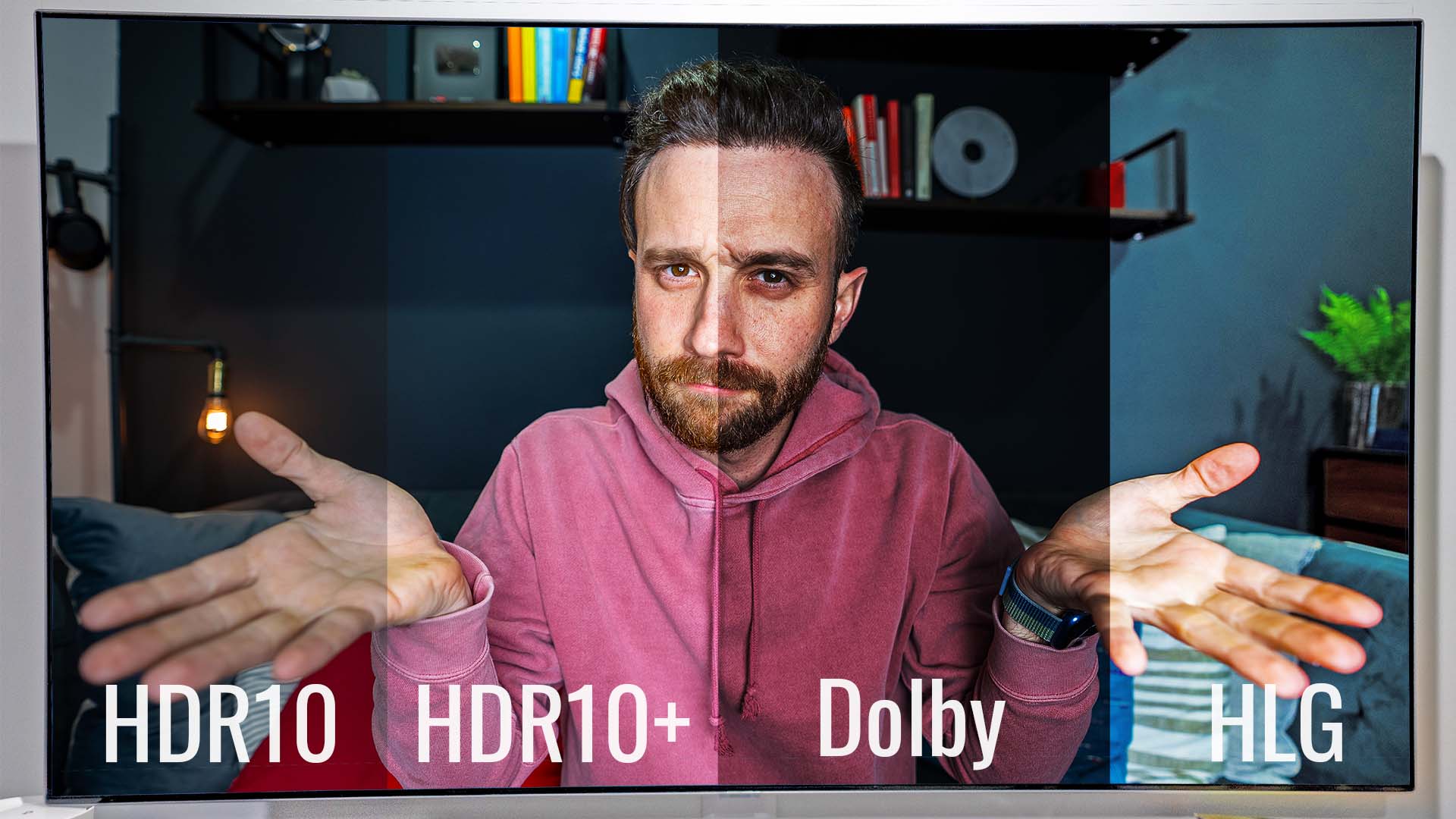Why 8K is NOT Pointless
There is no shortage of people out there talking about how dumb 8K is.
And, honestly, having seen 8K TVs next to 4K ones many, many times, I can tell you there is a difference. Frankly, they’re using measurements and charts that don’t show the entire picture and after going down a very deep rabbit hole of scientific studies I think I can explain what’s missing and why 8K is not pointless.
So in this episode of Decodr, my explainer series here on the channel, let’s talk about that.
Firstly, I partnered with MediaTek to do this video as they are the number one chipset provider of smart TVs and are in 70% of all TVs globally. The TV you have in your living room? There’s a good chance that it’s probably powered by one of their chipsets. So we can say they’re experts when it comes to TVs.
Increasing Size & PPI
So the first obvious benefit of 8K vs 4K that everyone can agree on it seems is the drastic pixel density increase when talking about larger TVs. If you have a 55” 4K TV vs a 55” 8K TV that pixel density goes from 80 PPI to 160 PPI and that’s a huge difference obviously. So it’s easy to see why 8K is great for any screens especially over a certain size. No arguments there.

Perceived Differences Between 4K vs 8K
Now, it seems this is where people start to get very negative about 8K and that’s if the TV is smaller than a certain size they’ll say you simply cannot see the difference between them.
Maybe not that surprising to hear but this was basically the same argument that was given for 4K coming from 1080P.
Well, I’m sure most of you at this point can easily tell a difference with your 4K TV compared to a 1080P TV even at smaller sizes that technically shouldn’t be possible. And I can tell you you’ll see a difference between an 4K and 8K one, as well. So why is that?
Well, it turns out that our visual capabilities are a lot more complex than that of the Snellen visual acuity chart that everyone likes to use to prove their 4K vs 1080P and now 4K vs 8K theories. And that’s because we have an often forgotten component behind our eyes that is what is actually doing all the processing and manipulating of that raw data: our brains.
Essentially, our vision system and how we see the world also includes a ton of optical illusions: things we all perceive but cannot scientifically measure. And there are a number of these that we can absolutely see a positive change in, even if they’re hard to measure, when we increase resolution from 4K to 8K.
The first of these is Vernier Acuity.

This phenomenon is sometimes referred to as hyperacuity as it goes beyond our visual acuity (or our normal ability to see). There’s a live test of this on the web that I’ll link to below for you to play with if you want later but essentially you click the buttons on the demo to determine where the gap in the circle is facing (this is for visual acuity) and which side you think the top line in the pair on the right is in relation to the other (this is for vernier acuity).
As you get the answers correct the Landolt C (as it’s called) and the two lines randomly adjust position and get smaller and smaller. What eventually happens is that when you can no longer see the gap in C on the left you are still able to tell that the lines are offset–even to the point where they are off by fractions of a pixel. Which shouldn’t be possible by the usual visual measurements and goes well beyond the pixels. Now, because your TV is made up of lines of dots this has an effect that we’ll get into shortly. Fun fact, by the way, the thought is that this ability to better see things in relative position to one another came from us needing to see prey or predators in the wild hiding in say, tall grass, etc.
The next optical illusionI need to bring up is mach banding.

Now, mach banding is the phenomenon that when you take colored bands in a gradient and put them next to each other, the brain for some reason makes the edge of each appear brighter on one side and darker on the other even though the luminosity of them is the same across the band. Overall this makes for sharper perceived edges and also a higher perceived brightness in the center and higher contrast (the difference between the center and the edges). None of this again can be measured but it is the way it looks to our eye and brain.

So with more resolution even with the same luminosity, edges seem sharper, colors seem brighter and so does contrast.
And lastly, the simple fact that there are a lot more pixels helps with gradients looking smoother. This helps curved objects look more like a continuous surface rather than a sectioned one.

A basic idea of why these are all the case is that our brains are not used to seeing the world in pixels so they always try to process the pixel-based images into the analogue, non-pixel way the world actually is. So the more pixels we have the less you have this offset happens, the brighter and more contrasted things look, the smoother the gradients are, the less our brains have to process it all and the more real and pleasing to the brain an image will look.
Cognitive Effects on Image Quality in 8K
And it’s not all just theory. In a study conducted by Dr. YungKyong Park of Ewha Womans University in Seoul, 120 subjects whose eyesight was verified were shown the same collection of 16 images and 3 videos on two 65” TVs side by side (one 4K and one 8K). They were both set to 500nits of brightness and the test subjects were 9 feet from them. They were then surveyed after and the findings backed up these concepts.

Overall subjects rated the 8K images as 35% better–image quality was rated as 30% better and depth perception was rated as 60% better.
The most fascinating part of this study was that rather than pointing out the increased sharpness or contrast of the image associated with higher resolution, participants highlighted the main differences to be those related to sensory perceptions. So, they described images depicted on the 8K screen as objects looking cooler, warmer, more delicious, heavier.

Essentially, the effects I mentioned made objects seem more 3D like, items were better separated from their backgrounds thanks to sharper perceived edges, shadows and colors had less of that stepping effect and were more gradual–in other words, the images seemed more real.

Dr. Park said at an 8K Summit in New York I attended a while back. “With 4K it was all about details. With 8K, we’re talking about mass and volumetrics.”
“This is not something you can measure, but it is something you can see,” Park added. “With 8K, you’re moving on to a better optical illusion.”
And honestly, I’ve seen it. On two TVs from the same manufacturer with the same features just different resolutions. The 8K TV looked better.
Now, of course, this doesn’t mean 8K doesn’t face challenges. There is still a lack of native content but that was the same as with 4K when it first launched and I’d argue that we are poised to make 8K content already.
Plenty of professional cameras that started coming out from back in 2015 and onward all shoot in 8K and have been used to do so on some movies (they just get rendered down to 2K and 4K in the final output) and even now we have phones that shoot 8K, and Canon has their EOS R5 camera on the horizon that also shoots in 8K (and you can bet Sony is working on one too if Canon is). There’s more and more ways to capture 8K for content.

Even beyond that though, while 4K upscaling from back in the day honestly didn’t look that great, the 8K upscaling that I’ve seen on TVs has been way better than I expected and that’s in big part to chipsets like the new MediaTek S900 that has AI capabilities built in to help with this along with boost picture quality in general. And it’s that machine learning aspect that has actually made the upscaling and filling in of the missing pixels based on a constantly updated database of images so much better than it was in the 4K upscaling era.

And for streaming services there are even new codecs that are being worked on beyond HEVC that we are starting to see now to further reduce the file sizes and bandwidth needed for 8K streaming and downloading. The one everyone is excited about right now is the royalty-free A1V from Google that is already supported by Google’s products like Chrome, Android, YouTube, etc. but also Vimeo and Netflix. Mediatek’s Dimensity 1000 chipset is not even the first to support hardware decoding of the new codec already (a necessary step for the better option of it). And gaming is already going to be in 8K pretty soon thanks to the new consoles from Sony and Microsoft coming this year that will both support it.

The price, while also still at premium tiers as again as with all new tech, is already starting to come down. You can get a Samsung Q900 8K QLED TV that has WiFi 6 built in even thanks to their partnership with MediaTek for as little as $2,499 right now in some versions. And while that is a lot compared to the new cheaper 4K TVs it’s not as big of a jump as we saw with 4K and 1080P and it’ll only come down more and more.

And so while yes, 8K is going to face some challenges, just as 4K did, but to say it is pointless in the first place is just wrong. It’s not just about pixels per inch (which again are actually still a benefit), it’s about getting one step closer to making the images you see on a TV look a lot more like you’re looking through a window.
Personally, I’m excited for 8K and beyond. Let me know what you guys think!









TLDR . Still no 8k content for TV and still no 8k gaming in 2022. useless.